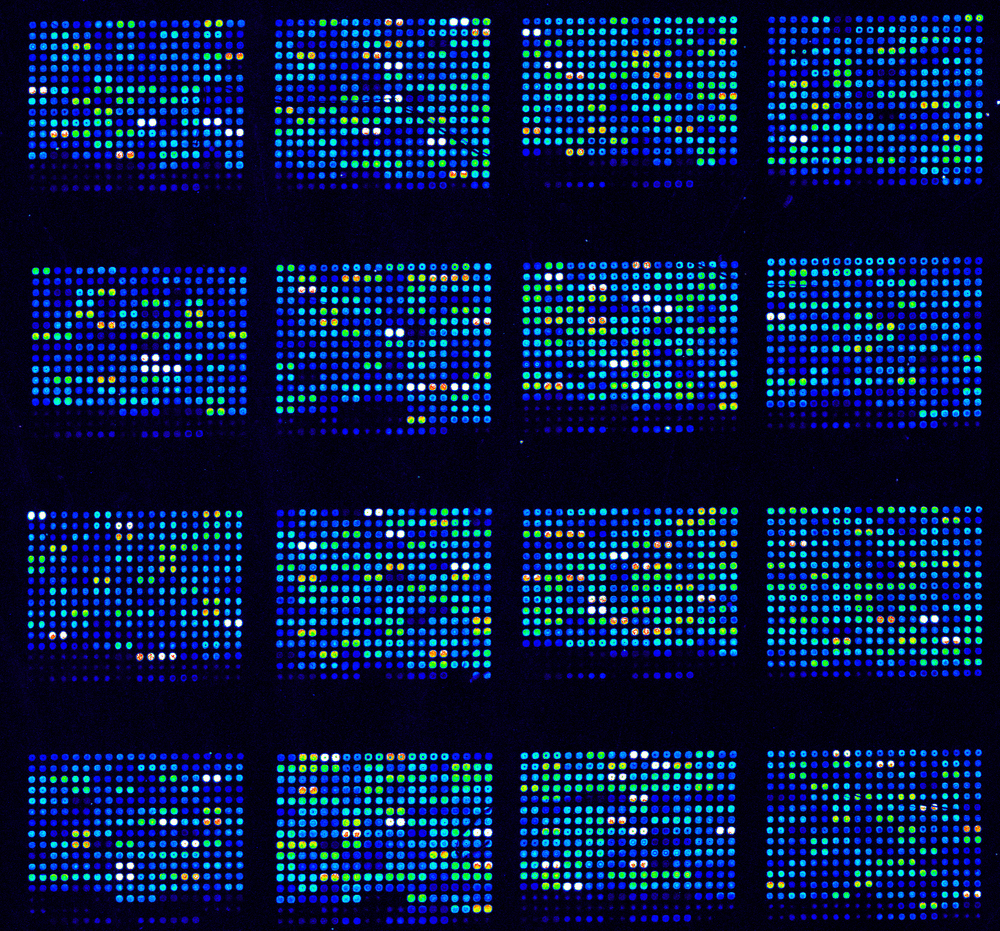Generic Form of Glatiramer Acetate Has Equivalent Gene Expression Profile as Teva’s Copaxone
Written by |

DNA microarrays are used in biological research to simultaneously measure the expression of thousand of genes
In a recent study entitled “Equivalent Gene Expression Profiles between Glatopa™ and Copaxone®,” authors determined potential differences in treatment responses by investigating the gene expression profile of two approved treatments for relapsing forms of multiple sclerosis – Copaxone and Glatopa. Both of these MS therapies are glatiramer acetate injections, however, Glatopa is a generic medicine recently approved by the U.S. Food and Drug Administration (FDA). The study was published in the journal PLOS One.
Multiple sclerosis (MS) is a chronic autoimmune disease where the patients’ own immune system attacks the central nervous system, specifically myelin (a component that covers and protects nerve fibers), leading to motor and neurological disability and paralysis. While in the onset of the disease the symptoms are sporadic, in the relapsing-remitting MS (RRMS) stage, disease progression can lead to symptom worsening, known as secondary progressive MS (SPMS).
Copaxone® (a glatiramer acetate injection marketed by Teva Pharmaceutical Industries Ltd.) is an FDA-approved treatment in the United States for relapsing forms of MS, the most common disease course. Glatiramer acetate (GA) is composed of a mixture of synthetic molecules synthesized from the amino acids L-alanine, L-glutamic acid, L-lysine, and L-tyrosine. Its mode of action is not clear, however, it is thought to occur via immunomodulatory mechanisms involving both innate and adaptive immune systems. These may include altering regulatory T-cell functions, promoting the shift from T-helper 1 (Th1) to T-helper 2 (Th2) immune cells thereby creating a more potent anti-inflammatory environment, modulation of B cells and antigen-presenting cell (APC) functions.
EXCLUSIVE: Genentech/Roche Interview with MS News Today on Promising MS Therapy Ocrelizumab
Glatopa™ (a glatiramer acetate injection marketed by Sandoz Inc.) is the first generic glatiramer acetate approved by the FDA. In this new side-by-side study, authors evaluated the equivalence of the biological response between Glatopa and Copaxone therapies in animal models. To this end, researchers analyzed the gene expression profile of cells (more specifically murine GA-responsive Th2-polarized T cells) in response to both treatments by microarray analysis with 39,429 unique probes. This strategy allows researchers to detect differences in the genome related to treatment responses.
The team found no significant differences in gene expression between Copaxone and Glatopa therapies, therefore establishing that the generic form of glatiramer acetate has the same response profile as Copaxone. This is especially important since the patents on the first approved MS therapies, including glatiramer acetate, are ending, opening up the possibility for the development of generic alternative drugs with similar clinical efficacy, and which may reduce the costs for contributors and patients.





